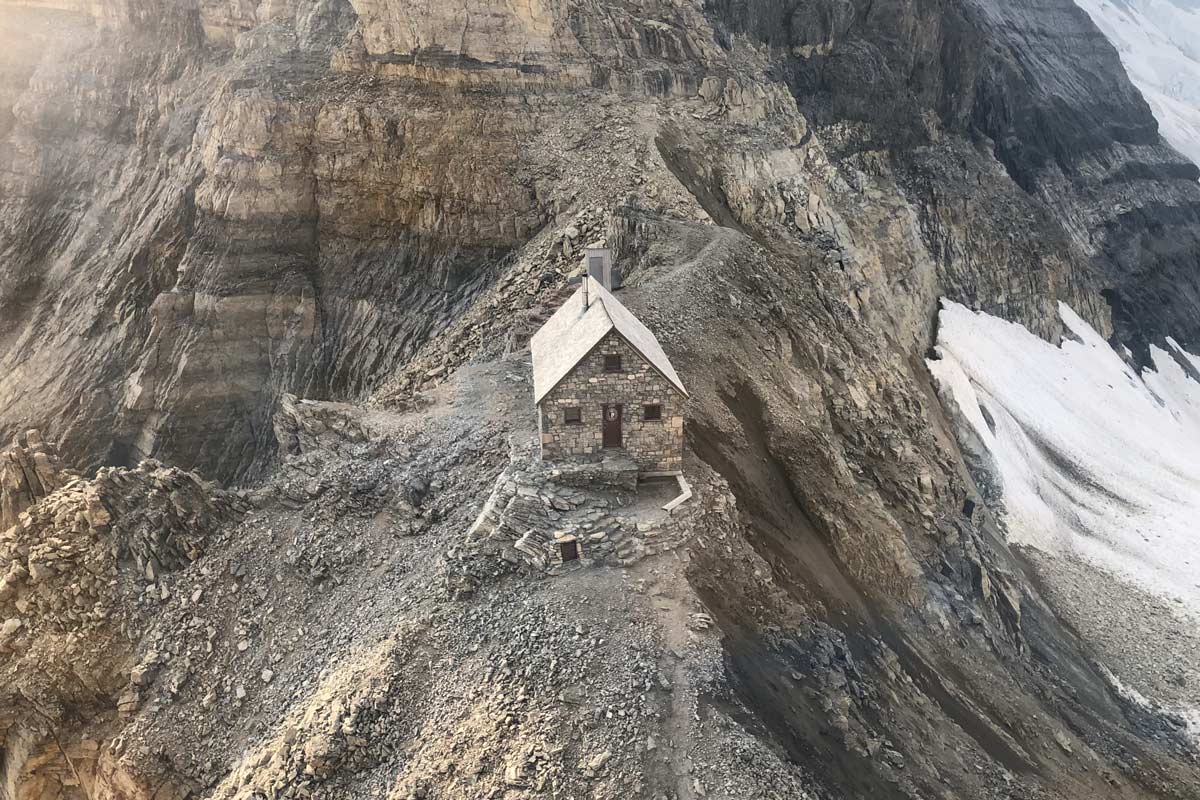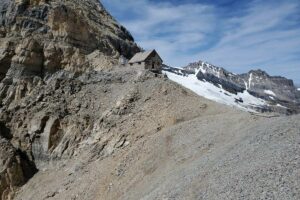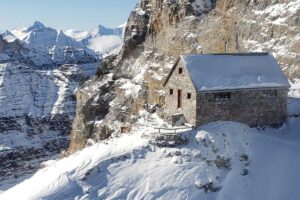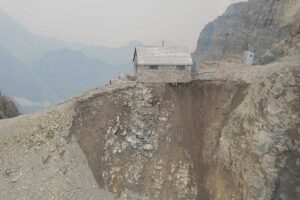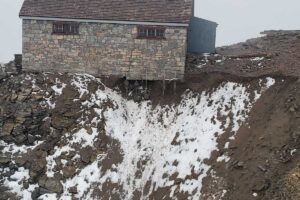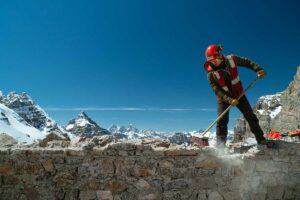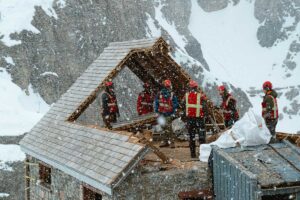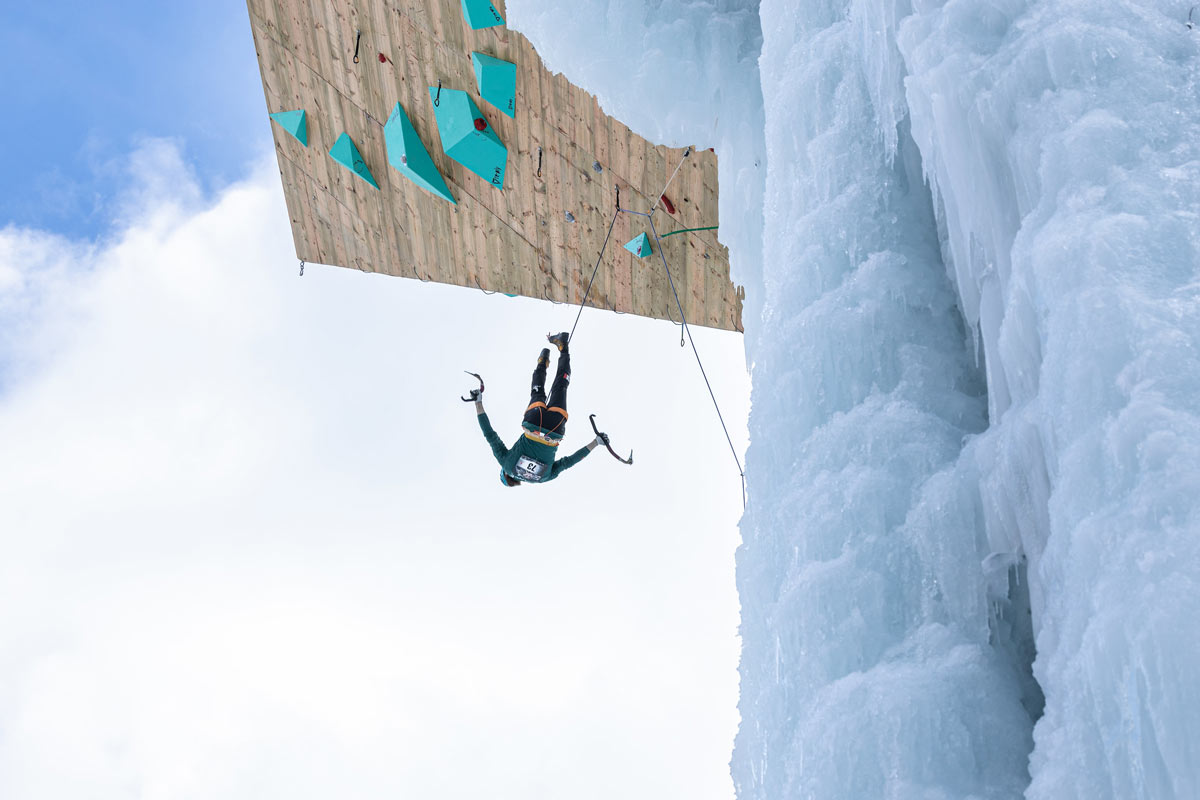The story of Abbot Pass Hut, a national historic site in Canada lost to climate change, was presented at the most recent UIAA General Assembly by François Masse from Parks Canada.
Abbot Pass Hut was maintained by the Alpine Club of Canada who in its annual State of the Mountains report, described the Hut’s location as such: “…on the high, narrow ridge in the Canadian Rockies that forms Abbot Pass, 2,925 metres above sea level, between Lake O’Hara in Yoho National Park and Lake Louise in Banff National Park, on the Continental Divide.”
The Hut was built in 1922 by Swiss guides. It was located strategically to support those climbing from Lake Louise and to provide altitude accommodation for the growing number of mountaineers.
Owing to the ravages of climate change the hut was initially closed in 2018. A move which became permanent and with the building no longer safe, demolition work began in 2022. As the State of the Mountains report explains: “The Abbot Pass Refuge Cabin should still be standing, the snowmelt from its shake roof still flowing to both the Pacific and Atlantic oceans. Mountaineers should still be coming here during the climbing season, dining, bunking, and warming themselves by the wood stove before making their early morning start for the summits. No-one had accounted for climate change.”
As Masse detailed during his extensive and engaging presentation at the UIAA General Assembly (see video below), the Abbot Pass Hut was a cherished place, regularly maintained to excellent standards by its various custodians.
In 2016 a report documented instability on the hut’s northern slope. Further investigations showed significant ice and snow receding. “This was out of the blue, happening very high up and not where we were expecting the first wave of climate change,” explained Masse. In 2018, significant slope failure led to the closure of the hut. Emergency mitigation work took place to stabilise the building. This was a rapid, proactive and expensive response which cost in excess of half a million dollars.
A year later, more slope stabilisation was planned but given the annual weather window to work on the building is quite short, the prevailing conditions made it impossible. Then the Covid-19 pandemic compound the issue. By 2021, further assessment took place and by now slope erosion was visibly very significant and the building at risk of immediate collapse. For safety of climbers on such a popular route, the hut was shut. Permanently.
Masse explains the impact this had on the climbing community: “The hut was very personal for a lot of people. The building had a significant cultural importance so climate change not only forced on the built environment but also a big impact on mountain culture in the area.”
The State of the Mountains Report offers greater context for why the hut had been at such risk: “In recent decades, warming temperatures and increased precipitation in western Canada have led to a significant increase in mountain landslides. The latest report from the Intergovernmental Panel on Climate Change concludes, with very high confidence, that 1.5°C warming will further accelerate this trend. Only an immediate reduction in greenhouse gas emissions will curb the most serious consequences for natural systems — and for human infrastructure. At Abbot Pass, the mean annual temperature has already increased about 1.4o C since the mid-twentieth century, precipitation by over six per cent.”
In 2022, the process began to demolish the hut, brick by brick. This was necessary, firstly because the hut was blocking key routes and posing safety risks. A further consideration was an ecological one. Although largely built from natural stone, the building contained a number of man-made materials. These needed be removed from the natural environment.
As a next step Parks Canada and the AAC, who spent significant time documenting the life and construction of the hut, are commemorating the history of the hut and using it as a climate change case study for lessons learnt.
As the State of the Mountains report closes: “The Swiss guides built their mountain hut in an earlier and more innocent age — one where you could believe that change came slowly to the high alpine. That age is behind us, the demolishment of what was until now a National Historic Site standing witness to the irreparable damage brought about by a rapidly warming planet.”
A recent article, quoting the Alpine Club of Canada and Parks Canada, announced that a plan is in motion for a new structure to replace the Abbot Pass Hut. Further details to follow.
Further Reading
2022 State of the Mountains Report
Main photo: Abbot Pass Hut. Copyright Parks Canada

